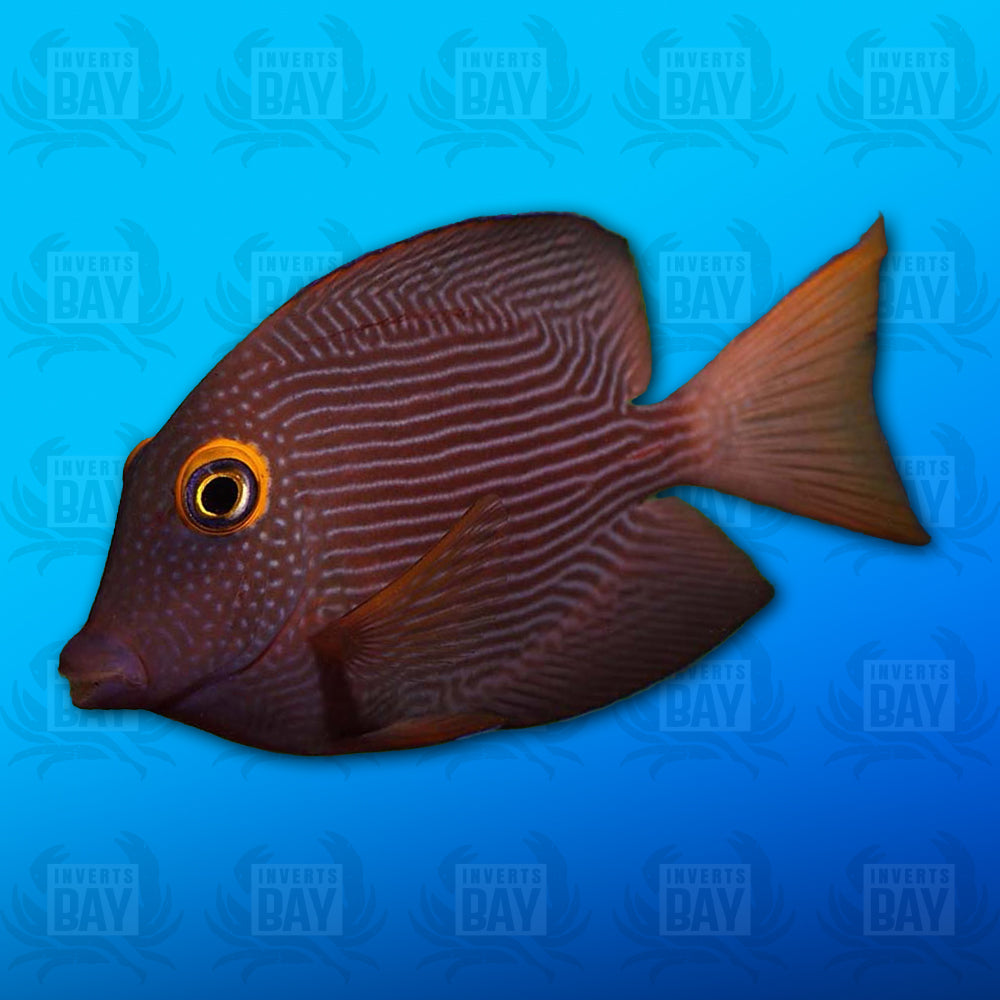(!) Online orders may be adjusted or canceled in the event of pricing errors or unavailable items.
1
/
de
1
Inverts Bay
Yellow Eye Bristletooth Tang
Yellow Eye Bristletooth Tang
Prix habituel
$120.00 CAD
Prix habituel
Prix promotionnel
$120.00 CAD
Prix unitaire
/
par
Frais d'expédition calculés à l'étape de paiement.
Impossible de charger la disponibilité du service de retrait
The Yellow Eye Bristletooth Tang (Ctenochaetus strigosus), also known as the Kole Tang or Goldring Bristletooth, is a popular marine fish appreciated for its algae-grazing habits and distinctive appearance. Native to the reefs of the Central Pacific, particularly around Hawaii, this species is a beneficial addition to reef aquariums.
(REEF SAFE / BEGINNER-INTERMEDIATE)
Essential Information:
- Common Names: Yellow Eye Bristletooth Tang, Kole Tang, Goldring Bristletooth
- Scientific Name: Ctenochaetus strigosus
- Family: Acanthuridae
- Origin/Habitat: Inhabits shallow reef flats and lagoons in the Central Pacific, especially prevalent around the Hawaiian Islands.
- Maximum Size: Typically reaches up to 7 inches (17 cm) in length.
- Lifespan: With proper care, they can live between 5 to 10 years in captivity.
- Level of Difficulty: Easy to Moderate; requires a well-established tank with ample algae growth.
Appearance & Physical Traits:
- Coloration & Pattern: Features a brown to blue body with fine, horizontal stripes and a distinctive yellow ring around the eye. Juveniles may display a more yellowish hue.
- Body Shape & Structure: Oval, laterally compressed body typical of tangs, equipped with specialized bristle-like teeth for scraping algae.
Habitat & Environmental Needs:
- Minimum Tank Size: A minimum of 70 gallons (265 liters) is recommended to provide sufficient swimming space.
- Water Temperature: Maintain between 75°F to 82°F (24°C to 28°C).
- pH Level: Optimal range is 8.1 to 8.4.
- Specific Gravity: Maintain between 1.022 to 1.026.
- Aquascape: Provide ample live rock for grazing and hiding spots, ensuring open areas for swimming.
Diet & Feeding:
- Diet Type: Primarily herbivorous.
- Preferred Foods: Feeds mainly on algae; supplement diet with marine-based seaweed, algae sheets, and occasional meaty foods.
- Feeding Frequency: Offer food 2 to 3 times daily.
Behavior & Compatibility:
- Temperament: Generally peaceful but may exhibit territorial behavior towards similar species.
- Social Behavior: Best kept singly unless in a very large aquarium; may show aggression towards other tangs or fish with similar shapes.
- Tank Mate Compatibility: Compatible with a variety of marine species; caution is advised when introducing other tangs or similarly shaped fish.
- Activity Level: Active swimmer, often seen grazing on algae throughout the tank.
Care Considerations & Additional Notes:
- Ease of Care: While hardy, they require stable water conditions and a well-established tank with natural algae growth.
- Special Requirements: Ensure a well-covered tank to prevent jumping; maintain high water quality to prevent disease.
- Breeding Info: Breeding in captivity is rare and not well-documented.
- Additional Notes: Regular monitoring is essential to manage potential aggression and ensure the well-being of tank mates.
Share

